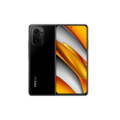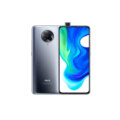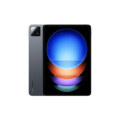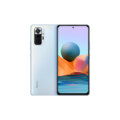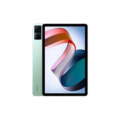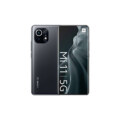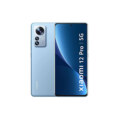Xiaomi Redmi Pad Pro



Specs
General
| Device Type | Xiaomi Tab |
| Model | Mi Pad 5 Pro |
| Announced | 10 August, 2021 |
| Status | Available |
Design
| Dimensions | 254.7 x 166.3 x 6.9 mm |
| Weight | 515 g |
| Protection |
Glass front Aluminum frame Plastic back |
| Colors |
Cosmic Gray Pearl White Green |
Display
| Refresh Rate | 120 Hz |
| Display Type Display Technology => A number of display technologies and types used in mobile phones => TFT (Thin Film Transistor), IPS (In-Place Switching), OLED (Organic Light Emitting Diode), AMOLED (Active-Matrix Organic Light-Emitting Diode), Super AMOLED (an even advanced version of AMOLED), Resistive Touchscreen (Resistive touchscreens contain two layer of conductive material with a very small gap between them which acts as a resistance), Capacitive Touchsceen (Capacitive touchscreen technology consists of a layer of glass coated with a transparent conductor) | IPS LCD |
| Size | 11.0 inches |
| Resolution | 1600 x 2560 pixels |
| Display Colors Display Colors is refers to the number of different shades of colors that the screen is capable of displaying => 64K colors, 256K colors and 16 million colors, Obviously 16M is highest available range of colors and better than others. | 1B colors |
| Pixel Density Pixel Density (PPI) is refers to the concentration of pixels on a particular display, measured in pixels per inch (ppi). Pixel density is calculated by dividing the diagonal pixel resolution of a display by its diagonal size, higher pixel density better display quality. | ~ 274 ppi |
| Touch Screen | Capacitive Touchscreen, Multi-touch |
| Display Protection Display Protection => Gorilla Glass is a special alkali-aluminosilicate glass shield with exceptional damage resistance that helps protect mobile displays from scratches, drops, and bumps of everyday use, It is always better to go for a smartphone with Gorilla Glass for that added protection and peace of mind. | Unspecified |
| Secondary Display | No |
Camera
| Front Camera | 8 MP, f/2.0 |
| Camera Setup | Double |
| Main Camera Camera is able to capture photographs and usually videos, The most important characteristics of a camera are the resolution (measured in megapixels), lens focus type (fixed or automatic), higher megapixel cameras are known to capture higher quality photos, but not always a good measurement of the photos quality. |
13 MP, f/2.0, AF 5 MP, f/2.4, (depth) |
| Image | 4128 x 3096 Pixels |
| Video | 4K@30fps, 1080p@30fps |
| Camera Features | HDR, panorama |
| Flash Flash Light => There is commonly two types of flash lights are used in camera mobile phones, LED Flash (LED flash offers lower power consumption with drive circuitry that takes up very little room, LEDs can be strobed faster than any other light source), Xenon Flash (xenon flash produces an extremely intense full-spectrum white light for a very short duration) | Dual-LED flash |
Hardware
| Operating System OS => Every computer system run on a base software called Operating System (OS). Operating System controls all basic operations of the computer (such as smartphone, PDAs, tablet computers and other handheld devices). The Operating System allows the user to install and run third party applications (apps), apps are used to add new functionality to the device. | Android 11 |
| Chipset Chipset is a group of integrated circuits designed to perform one or a more dedicated functions, often with real time computing constraints, Popular smartphones are equipped with more advanced embedded chipsets that can do many different tasks depending on their programming. | Qualcomm Snapdragon 870 |
| CPU CPU (Central Processing Unit) mostly known as processors, CPU processes instructions in order to carry out certain functions that make your device operate properly. Processors are often described as the brain of computers, smartphones and tablets, Smartphones and tablets rely on processors to carry out their every task, Processors are an incredibly important factor in selecting any type of computing device, including your smartphone. | Octa-core (1x3.2 GHz Kryo 585 & 3x2.42 GHz Kryo 585 & 4x1.80 GHz Kryo 585) |
| Architecture | 64 bit |
| Fabrication | 7 nm |
| GPU GPU (Graphics Processing Unit) is a single-chip processor designed to rapidly manipulate and alter memory to accelerate the creation of images in a frame buffer intended for output to a display, This includes things such as lighting effects, object transformations, and 3D motion. | Adreno 650 |
| RAM (Memory) RAM (Random Access Memory) is a type of computer memory that can be accessed randomly, any byte of memory can be accessed without touching the preceding bytes that allows information to be stored and accessed quickly from random locations. RAM is the most common type of memory found in computer systems, smartphones, tablets and other electronic devices. | 6GB RAM, 8GB RAM |
| Internal Storage Internal Storage is a data storage space (flash memory) mostly used in smartphones, tablets and other electronic devices where operating system, apps, music, photos, videos, files and other user data Is stored. | 128GB / 256GB Built-in |
| Card Slot Memory Card Slot is a special slot for inserting a memory card. Memory cards allow you to expand the phone's built-in memory, A memory card (sometimes called a flash memory card or a storage card) is a small storage medium used to store data such as text, pictures, audio, and video, for use on small, portable or remote computing devices such as mobile phones, mp3 players, digital cameras. | |
| Sensors Sensors are electronic components that detects and responds to some type of input from the physical environment. The specific input could be light, heat, motion, moisture, pressure and location, The output is generally a signal that is converted to use in computing systems, a location sensor, such as a GPS receiver is able to detect current location of your electronic device. | Accelerometer, gyro, proximity, compass |
Network
| SIM TYPE SIM (Subscriber Identity Module) is a small card that contains mobile network subscriber's account information. This allows the phone using the card to attach to a mobile network. The SIM card is most commonly associated with GSM and UMTS mobile networks. Moving a SIM card from one phone to another allows a subscriber to switch mobile phones without having to contact their mobile network carrier. SIM cards can also be used by a phone to store limited amounts of data, such as phone numbers and text messages. | Nano SIM |
| SIM Technology | Nano-SIM |
| 2G Network | GSM 850 / 900 / 1800 / 1900 |
| 3G Network | HSDPA 800 / 850 / 900 / 1700(AWS) / 1900 / 2100 |
| 4G Network | LTE |
| 5G Network | SA/NSA/Sub6 |
Multimedia
| FM Radio | |
| Stereo Speakers | YES |
| Loudspeaker | YES |
| Audio Jack | NO |
| Audio Features | Dolby Atmos |
Connectivity
| Wi-fi Wi-Fi is a popular wireless networking technology using radio waves to provide high-speed network connections that allows devices to communicate without cords or cables, Wi-Fi is increasingly becoming the preferred mode of internet connectivity all over the world. | Wi-Fi 802.11 a/b/g/n/ac/6, dual-band, Wi-Fi Direct |
| Bluetooth Bluetooth is a wireless communications technology for exchanging data between mobile phones, headsets, computers and other network devices over short distances without wires, Bluetooth technology was primarily designed to support simple wireless networking of personal consumer devices. | 5.2, A2DP, LE |
| GPS GPS The Global Positioning System is a satellite-based radio navigation system, GPS permits users to determine their position, velocity and the time 24 hours a day, in all weather, anywhere in the world, In order to locate your position, your device or GPS receiver must have a clear view of the sky. | GPS, GLONASS, GALILEO, QZSS (5G model only) |
| USB | USB Type-C |
| EDGE EDGE (Enhanced Data GSM Environment) is a wireless network technology generally considered the next step in the 2G network offers data transfer rates up to four times faster than ordinary GSM networks, Generally, EDGE is used for the purpose of wireless data transfer, such as sharing pictures and videos or browsing the Internet via a mobile phone connection. | |
| GPRS GPRS (General Packet Radio Service) is a packet oriented mobile data service on the 2G and 3G cellular communication system's global system for mobile communications (GSM), Generally, GPRS is used for the purpose of wireless data transfer, such as sharing pictures and videos or browsing the Internet via a mobile phone connection. | |
| Wi-fi Hotspot | |
| NFC NFC (Near field communication) is a set of standards for smartphones and similar devices to establish peer-to-peer radio communications with each other by touching them together or bringing them into proximity, usually no more than a few inches. |
Features
| Messaging | SMS(threaded view), MMS, Email, Push Mail, IM |
| Web Browser Web Browser => a web browser is a software application used to locate, retrieve and display content on the World Wide Web, including Web pages, images, video and other files, The primary function of a web browser is to render HTML, the code used to design or markup webpages. | HTML5 |
| Games | Built-in + Downloadable |
| Torch |
Battery
| Battery Type Battery Type => Cell phones run on various kinds of batteries depending on the manufacturer, phone size or shape and features. There are basically four types of cell phone batteries => Lithium Polymer, Lithium Ion, Nickel Metal Hydride and Nickel Cadmium. | Li-Po |
| Capacity Battery Capacity is a measure (typically in Amp-hr) of the charge stored by the battery, and is determined by the mass of active material contained in the battery. The battery capacity represents the maximum amount of energy that can be extracted from the battery under certain conditions. | 8600 mAh |
| Placement | Non-removable |
| Wireless Charging Wireless Charging (Inductive Charging) uses an electromagnetic field to transfer energy between two objects. This is usually done with a charging station. Energy is sent through an inductive coupling to an electrical device, which can then use that energy to charge batteries or run the device. | No |
| Extra | 67W wired, PD3.0, QC4 |
Xiaomi Redmi Pad Pro Review
Design
The Redmi Pad Pro showcases a sleek, minimalist design that aligns well with Xiaomi’s recent design language. Constructed from aluminum, the tablet has a solid and premium feel. The slim bezels around the display allow for an immersive experience, while the lightweight nature (around 490g) and 6.5mm thickness make it portable and easy to handle, even during extended use. Available in classic color options like Graphite Gray and Moonlight Silver, it appeals to users looking for both style and functionality.
Display
The Redmi Pad Pro features an 11-inch 2.5K (2560 x 1600) display with a 120Hz refresh rate. This high refresh rate, paired with a high resolution, makes scrolling and content consumption remarkably smooth. The IPS LCD panel supports HDR10, which enhances contrast and color vibrancy, though it may not be as vivid as AMOLED displays. With a brightness level of up to 400 nits, the display performs well indoors but can struggle slightly under direct sunlight. This large and sharp display makes it ideal for video streaming, gaming, and reading.
Performance
Under the hood, the Redmi Pad Pro is powered by the Snapdragon 870 chipset, a capable mid-to-high-end processor that ensures smooth performance in multitasking and gaming. Combined with options for 6GB or 8GB of RAM, it manages most tasks with ease, from heavy browsing to demanding games. While the Adreno 650 GPU handles most modern games at medium to high settings, some graphically intensive titles may require settings adjustments for the best performance.
The tablet is equipped with UFS 3.1 storage (up to 256GB), which offers faster read and write speeds, ensuring quick app launches and seamless data handling. Unfortunately, there’s no support for expandable storage, so choosing a configuration with sufficient storage for your needs is essential.
Camera
While tablets are not known for their cameras, the Redmi Pad Pro has an 8MP rear camera and an 8MP front camera. The rear camera is sufficient for document scanning and occasional snapshots in well-lit environments but may struggle in low-light conditions. The front camera, however, is suitable for video calls and online meetings, as it captures decent quality in well-lit settings. Xiaomi Redmi Pad Pro has also optimized the front camera to keep users centered during video calls, a feature that adds to its utility for work or virtual learning.
Battery Life
One of the standout features of the Redmi Pad Pro is its 8600mAh battery, which can last a full day with moderate usage. The tablet supports 67W fast charging, which can charge the device up to 50% in under 30 minutes, and a full charge in about an hour and a half. This is ideal for users who need to top up quickly between uses. With balanced usage, including web browsing, video streaming, and light gaming, the battery can easily last 10-12 hours.
Software
The Redmi Pad Pro runs on MIUI for Pad, which is based on Android. Xiaomi Redmi Pad Pro has optimized MIUI for larger screens, offering split-screen multitasking, floating windows, and a dock that makes it more user-friendly in productivity settings. The interface is intuitive and well-suited for multitasking, with dedicated gestures and customizations tailored for tablets. However, it comes with pre-installed apps that some users may find unnecessary, though most can be uninstalled.
While MIUI for Pad is smooth and feature-rich, it lacks the polish and tablet-focused optimizations of iPadOS or Samsung’s One UI. Still, it’s a strong offering in the Android tablet market, delivering a functional and customizable experience.
Audio
The Redmi Pad Pro features quad speakers tuned for optimal sound performance. They provide loud and clear audio output, making it a great device for watching movies or listening to music without needing external speakers. With Dolby Atmos support, it delivers a surround sound experience that’s immersive for a tablet in this price range. The tablet lacks a headphone jack, so you’ll need wireless headphones or a USB-C adapter for wired options.
Pros and Cons
Pros:
- High-resolution 2.5K display with 120Hz refresh rate
- Powerful Snapdragon 870 processor
- Quad-speaker setup with Dolby Atmos
- Fast 67W charging
- Long-lasting battery life
- Lightweight and premium build
Cons:
- No expandable storage
- MIUI for Pad lacks some tablet-specific optimizations
- Average camera performance in low light
- No headphone jack

Verdict
The Xiaomi Redmi Pad Pro is a compelling choice for users who want a mid-range Android tablet with solid performance, a beautiful high-refresh-rate display, and excellent battery life. While it’s not intended to replace a full-fledged laptop, it offers enough multitasking features and processing power to serve as a capable productivity device for students, casual gamers, and multimedia enthusiasts.
Review
Disclaimer Note
All prices in Pakistan is updated daily from the price list provided by local shops and dealers but we can not guarantee that the information / price on this page is 100% correct (Human error is possible), always visit your local shop for exact cell phone cost & rate.
